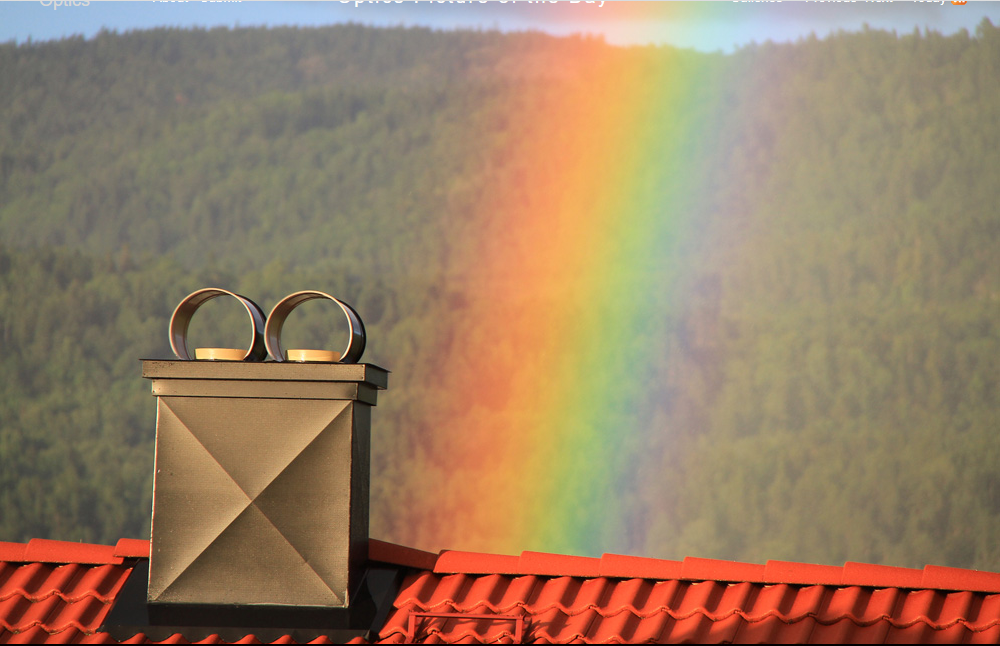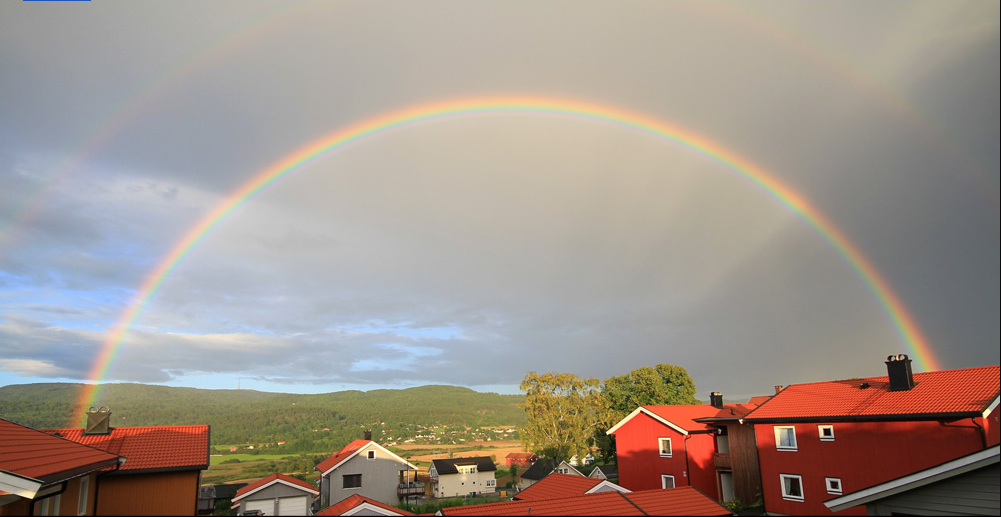OPOD - Skien, Norway Rainbow
OPOD - Skien, Norway Rainbow: A Captivating Display of Atmospheric Optics
Rainbows have long fascinated humans with their vibrant colors and ethereal beauty. They are a natural phenomenon that occurs when sunlight is refracted, reflected, and dispersed by water droplets in the atmosphere. While rainbows are commonly seen after rain showers, they can also appear in other weather conditions, such as mist or spray. One captivating example of a rainbow was captured in Skien, Telemark, Norway by the talented photographer Jan Thore Ovrum. In this article, we will delve deeper into the intricacies of this stunning rainbow and explore the fascinating optical phenomena it exhibits.
Exploring the Spectral Colors
In the close-up image captured by Jan Thore Ovrum, we can observe the spectral colors that make up the rainbow. As sunlight passes through water droplets in the atmosphere, it undergoes dispersion, causing the different wavelengths of light to separate. This separation results in the distinct colors we see in a rainbow: red, orange, yellow, green, blue, indigo, and violet. However, towards the blue and violet end of the spectrum, the hues become less saturated. This desaturation occurs because these colors are overlapped by lower intensities of all the colors towards the red end of the spectrum.
Primary and Reversed Color Secondary
The Skien rainbow showcases both the primary and reversed color secondary arcs. The primary rainbow is the familiar arc that appears on top of the sky, while the reversed color secondary is a fainter arc that appears below the primary. Between these two arcs lies an intriguing phenomenon known as Alexander's Dark Band. This "no-light" zone occurs due to light interference and causes a temporary absence of light within that region.
Supernumeraries and Spokes
Upon closer inspection of the Skien rainbow, we can observe additional captivating features. Supernumeraries, also known as supernumerary rainbows or extra rainbows, are fainter, parallel bands of colors that appear inside the primary rainbow. These bands result from the interference of light waves as they pass through the water droplets. The spokes, on the other hand, are radial streaks of light that radiate from the center of the rainbow towards its outer edge. These spokes add an extra layer of complexity and beauty to the already mesmerizing display.
The Influence of Atmospheric Conditions
The appearance and characteristics of a rainbow can be influenced by various atmospheric conditions. The size and shape of the water droplets, as well as their concentration in the air, play a significant role in determining the intensity and clarity of the rainbow. Additionally, the angle at which sunlight interacts with the water droplets affects the size and position of the rainbow in the sky. These factors, combined with the observer's location and viewpoint, contribute to the uniqueness of each rainbow sighting.
The Beauty of Nature's Optical Phenomena
The Skien rainbow serves as a reminder of the awe-inspiring beauty found in nature's optical phenomena. Rainbows, with their vibrant colors and mesmerizing arcs, have captivated humans for centuries. They remind us of the interconnectedness of light, water, and atmospheric conditions. Each rainbow is a unique masterpiece painted across the sky, showcasing the intricate workings of physics and nature's artistic flair.
Conclusion
The Skien, Norway rainbow captured by Jan Thore Ovrum offers a breathtaking glimpse into the world of atmospheric optics. From the spectral colors that compose it to the presence of primary and reversed color secondary arcs, this rainbow showcases a range of fascinating optical phenomena. Supernumeraries and spokes add an extra layer of complexity and beauty to this already enchanting display. By appreciating the intricate workings of rainbows, we gain a deeper understanding of the wonders that surround us in the natural world. So, the next time you spot a rainbow, take a moment to marvel at the captivating interplay of light and water droplets that create this magical sight.

Rainbow at Skien, Telemark, Norway ~ Imaged by Jan Thore Ovrum. The close-up shows the spectral colours. Towards the blue and violet the hues become less saturated because they are overlapped by lower intensities of all the colours redwards. Below we see the full primary and reversed colour secondary. Between them is the 'no-light' zone of Alexander's Dark Band. There are supernumeraries and spokes enliven the sky inside the primary. ©Jan Thore Ovrumk

Note: this article has been automatically converted from the old site and may not appear as intended. You can find the original article here.
Reference Atmospheric Optics
If you use any of the definitions, information, or data presented on Atmospheric Optics, please copy the link or reference below to properly credit us as the reference source. Thank you!
-
<a href="https://atoptics.co.uk/blog/opod-skien-norway-rainbow/">OPOD - Skien, Norway Rainbow</a>
-
"OPOD - Skien, Norway Rainbow". Atmospheric Optics. Accessed on November 26, 2024. https://atoptics.co.uk/blog/opod-skien-norway-rainbow/.
-
"OPOD - Skien, Norway Rainbow". Atmospheric Optics, https://atoptics.co.uk/blog/opod-skien-norway-rainbow/. Accessed 26 November, 2024
-
OPOD - Skien, Norway Rainbow. Atmospheric Optics. Retrieved from https://atoptics.co.uk/blog/opod-skien-norway-rainbow/.